A Diverse Community of Scholars

“It is fundamental in our purpose, and our express desire, that in the appointments to the staff and faculty as well as in the admission of workers and students, no account shall be taken, directly or indirectly, of race, religion, or sex. We feel strongly that the spirit characteristic of America at its noblest, above all the pursuit of higher learning, cannot admit of any conditions as to personnel other than those designed to promote the objects for which this institution is established, and particularly with no regard whatever to accidents of race, creed, or sex.”
The above quote appeared in the letter of invitation, dated June 4, 1930, from the Institute’s founders, Louis Bamberger and his sister Caroline Bamberger Fuld, to the Institute’s first Board of Trustees. A similar statement of nondiscrimination had been included in the certificate of incorporation signed on May 20, 1930, marking the creation of the Institute for Advanced Study. In his memoir of the Institute’s founding, Herbert Maass, who served as an attorney and adviser to the Bambergers and as one of the Institute’s first Trustees, wrote that this policy that has guided the Institute since its beginning, “exhibits all the facets of Mr. Bamberger’s and Mrs. Fuld’s minds, their generosity, their liberal views and their complete disregard of race, creed, or color.” This commitment has facilitated the advancement of knowledge by a diverse community of individuals. Moreover, from the start, it set the Institute on a course where fundamental research and the scholars who conduct it take precedence over racial, gender, and political boundaries as demonstrated by the following examples.
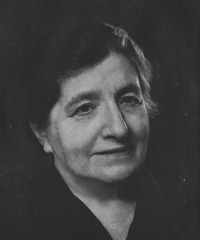
School of Historical Studies
Professor 1936–47, Professor Emeritus 1947–72
A pioneer in the investigation of pre-Greek and earliest Greek peoples, Hetty Goldman was one of five founding Faculty members in what was initially known as the School of Humanistic Studies and later became the School of Historical Studies. As a leader of excavations in Greece and Asia Minor, Goldman advocated precision in fieldwork and boldness in analysis. “Better a theory if the data at all allows,” she said, “for it will stimulate the imagination and awaken speculation in others who may well reach more acceptable results.”
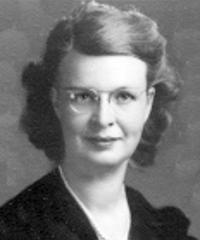
School of Mathematics
Member 1933–35
As a graduate student at the University of Chicago, Anna Stafford’s interest in topology drew her to Princeton University, where Oswald Veblen and James Alexander taught. “So I wrote to Princeton and said I wanted to study topology,” she recalled years later, “and they sent me a postal card saying, ‘We don’t take girls.’” When she read in the New York Times that Veblen and Alexander would be among the Institute’s first Faculty, she wrote to Veblen and was accepted as one of his seventeen postgraduate students in 1933. Stafford spent two years at the Institute, working at a secondary school in Mendham, New Jersey, in the mornings to support herself and attending IAS lectures in the afternoons. She found that she loved to teach, and went on to positions at the Universities of Nebraska and Utah and the College of Santa Fe, where she became a full Professor. At ninety-five, she reflected on her years at the Institute as “two years in Heaven.”
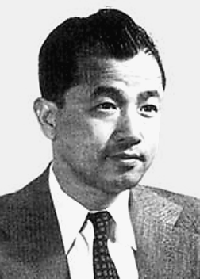
School of Mathematics
Member 1940–42 and 1948–49
Shizuo Kakutani first came to the School of Mathematics as a Member in 1940 to work with Hermann Weyl, a member of the School’s Faculty from 1933–55, who had noticed Kakutani’s work as a postgraduate at Osaka University in Japan. Aided by seminars run by Weyl and John von Neumann, Kakutani developed what is known as the Kakutani fixed-point theorem, a generalization and extension of a fundamental result in topology proving the existence of fixed points for continuous functions defined on subsets of Euclidean spaces. Kakutani’s theorem became an important tool in analyzing social systems, and it played a key role in the equilibrium concept for noncooperative games developed by John Nash, also a former Member in the School, for which Nash won the Nobel Prize in economics in 1994. After World War II, Kakutani was one of several Japanese scholars with whom the Institute struggled to reestablish contact. In a letter requesting permission for Kakutani to travel to the Institute, J. Robert Oppenheimer, Institute Director from 1947–66, wrote to General Douglas MacArthur, Supreme Commander of the Allied Powers in Japan, “In granting permission to Dr. Kakutani to return to America much would be done to evidence our friendship for the democratic forces within Japan, and for the men of learning who remained loyal to us throughout. It need hardly be added that we ourselves will profit very much by the collaboration which Dr. Kakutani’s visit would offer, and from learning at first hand of the work he and his colleagues have been carrying out.”
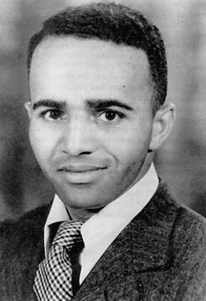
School of Mathematics
Member 1941–42
In 1941, David Blackwell became the seventh African American to earn a Ph.D. in mathematics. He spent the following year at the Institute as a Member in the School of Mathematics, where he developed his doctoral thesis into his first published paper, about Markov chains in probability. This work later grew into a series of papers that provided a rigorous mathematical basis for the theory of dynamic programming. Blackwell’s work in probability, statistics, game theory, and dynamic programming came to have wide-ranging influence, but he recalled in a 1984 interview that he didn’t choose problems to work on because of their potential applicability. “I just picked directions that interested me and worked in them. And I have had fun,” he said. “I guess that’s the way scholars should work. Don’t worry about the overall importance of the problem; work on it if it looks interesting. I think there’s probably a sufficient correlation between interest and importance.”
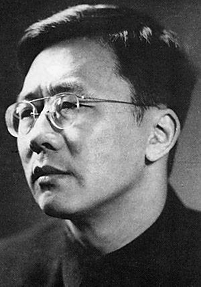
School of Mathematics
Member 1941–42
During the Japanese occupation of China, Loo-Keng Hua began corresponding with Weyl about mathematics and its role in China’s future. “Science is extremely needed,” Hua wrote. “Thus any help to the young scientists would mean a great help of the reconstruction of the country; and any influence to the young scientists would mean an influence to the history of science in China.” Weyl invited Hua to become a Member for the 1943–44 academic year, but Hua was unable to come to the Institute until 1946. Travel from China was very difficult, and a number of administrators at the Institute worked with Chinese authorities to make the visit possible. Eventually, Hua was assigned the rank of general in his passport so that he could travel more easily. Hua went on to serve as the first Director of the Institute of Mathematics of the Chinese Academy of Sciences.